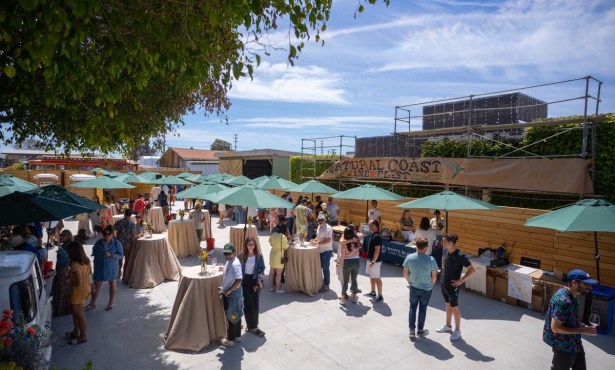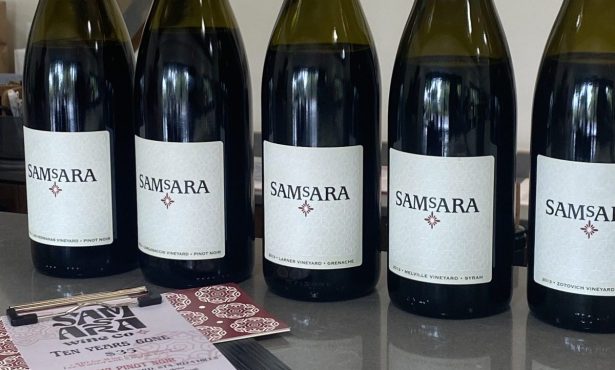Wolverine State Wines
Sampling Sips from the Vineyards of Michigan
I married a woman who was born in Bordeaux, France, but raised in Detroit, Michigan, so my growing interest in seeking out fine wines from the Wolverine State — particularly during our occasional visits to that flat, green land of auto factories and endless subdivisions — should come as no surprise. On my most recent visit in early September, I tried a handful of wines from the Nino Salvaggio grocery store on Rochester Road in the city of Troy and am sharing my thoughts on each of them below.
Altogether, some of these and the other Michigan wines I’ve tried over the years are often more sweet than I can handle — I’ve actually given away or thrown out more of the state’s wine than I’d care to admit — but there have also been some gems made by winemakers who clearly understand their climate’s limitations and have worked hard to overcome their less-than-ideal status. I assume that, like other emerging regions, Michigan’s vintners will only improve with time, perhaps even finding grape varieties that appreciate freezing cold winters and hot, muggy summers.
I should also note that, of the wines I tasted below, none are strictly rieslings or gewurztraminers, the two white grapes that Michigan regularly gets praised for. I plan to venture into those varietals on my next visit.
Here are the wines I tried in early September, mostly while sitting in my mother-in-law’s kitchen in Rochester Hills.

Chateau Grand Traverse Red Table Wine “Silhouette” 2008: Established in 1974 with one vineyard, the O’Keefe family’s chateau — located on the finger-like Old Mission Peninsula north of Traverse City — has grown to four vineyards that help these second-generation winemakers produce 18 varieties of wine.
This wine is a blend of pinot noir, gamay noir, cabernet franc, pinot meunier, and merlot, aged for 18 months on new oak, and listed as a 1 on the chateau’s 0 to 5 sweetness scale, with 5 being sweetest. It had a light pinot noir-like hue and not much aroma save for occasional hints of pepper, but it had great acidity to cut through the turkey lasagna we were eating that night and was “off-dry” enough to work well with vanilla bean cupcakes as well.
I’m not a fan of sweet red wines, unless they’re thicker like port, but this one was pleasant and not cloying at all. However, I quickly was reminded of the more sugary palate of an everyday Michigander when a local dinner companion took one sip and shouted, “Wow, wow, wow, wow — this is dry!”
$14.99, 13% alcohol, cgtwines.com

Chateau Grand Traverse White Table Wine Old Mission Peninsula “Ship of Fools”: This screwtop from the CGT crew features a design in which Michigan’s “mitten” layout is shown with an arrow pointing to the tip of the pinkie finger where the vineyard for this crisp and dry white is located.
With the label questioning whether it was “foresight, folly, or both” as to the success of this white wine, it was at the very least a most original blend of three pinots: 50 percent pinot blanc, for “finesse;” 40 percent pinot gris, for “power;” and 10 percent pinot noir (just the juice, no skins apparently), for “bouquet and aging.” The result was interesting, with the white wine throwing off way more nose than the previous red and offering apple and pear flavors, or perhaps a barely ripe nectarine or other stone fruit.
$14.99, 12.4% alcohol,cgtwines.com

Fenn Valley “Capriccio” Lake Michigan Shore NV: Closer on the Michigan mitten to where the pinkie bone nears the wrist — which is to say, northeast across Lake Michigan from Chicago — Fenn Valley Winery is headquartered in Fennville, but it also runs a tasting room in the slightly more bustling city of Saugatuck and grows its grapes a bit to the north, closer to the town of Holland. Believing that good grape growing regions are reliant on a large body of temperature-controlling water nearby, Fenn Valley relishes in the “lake effect” and is constantly managing its vineyard canopies and dropping crop when necessary to allow for more sunlight on the fruit, practices the winery has honed since starting the vineyard in 1973.
This “Capriccio” is their best-selling red wine, which they proclaim is “bold” without “tannic harshness” and full of “blackcherry” flavors. They encourage pouring it with rosemary-tinged foods or red fruit sauces and advise on the label, “Enjoy the wine whenever you would enjoy a mature merlot.” They don’t announce what grapes make up the blend, but then they don’t tell you the year either, being a nonvintage blend.
It doesn’t matter, though, as the “Capriccio” stood up as one of the better Michigan wines I’ve ever had, featuring a nicely rounded mouthfeel and being fruity but not too sweet, reminding me of a flavorfully crisp but not overly ripe and mushy strawberry. Although NV wines tend to be discouraged in contemporary circles — unless it’s bubbly, for some reason — winemakers in places like Michigan should be encouraged to use whatever techniques are available to present tasty wines. And if that means blending some of last year’s juice with the year’s before to make a dry and well-blended wine, I say go for it. Clearly, the “Capriccio” benefited from that ability to adjust accordingly.
$11.99, 12.5% alcohol, fennvalley.com

Shady Lane 2008 Estate “Coop de Blanc”: In my short time searching out Michigan wine, Shady Lane Cellars seems to be one of the easiest brands to find, so I’ve dabbled in its decent pinot noirs and cab francs in years past. Like Chateau Grand Traverse, Shady Lane is working the tip of the pinkie, but it is growing these grapes on the Leelanau Peninsula, across Grand Traverse Bay from the Old Mission Peninsula.
This time, I went for the “house” white wine, the Coop de Blanc, a proudly sweet blend of 60 percent vignoles and 40 percent riesling. Although pleasant in short spells, I found the wine to be way too sweet for me, offering the sugary punch of a moscato without the more viscous body to warm it up. Next time, I’ll opt for their dry reds instead.
$9.99, 11.1% alcohol, shadylanecellars.com



